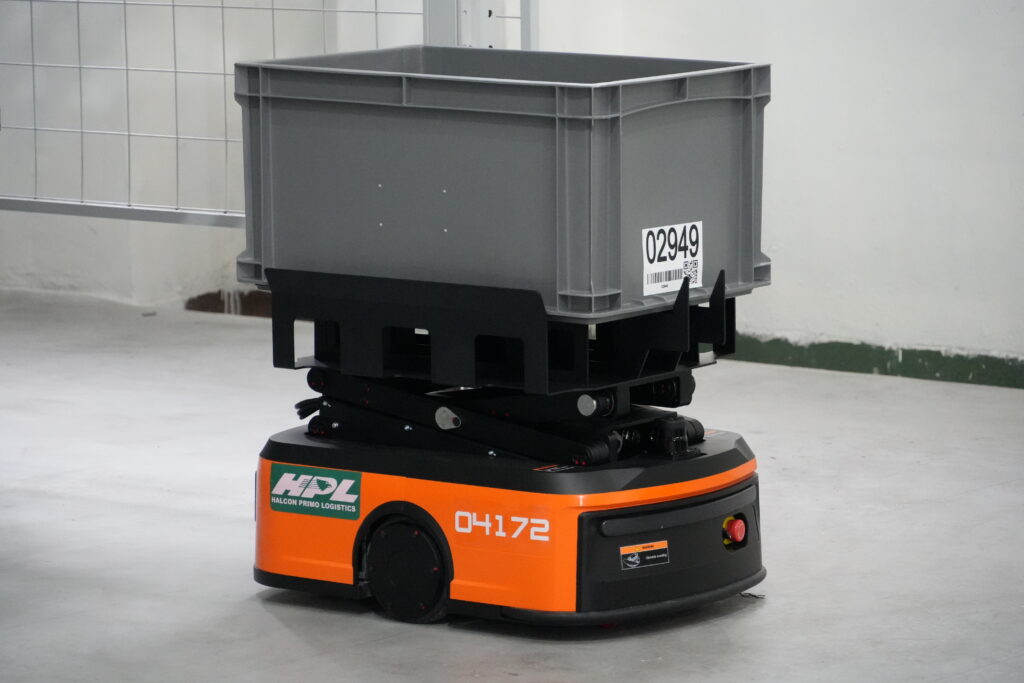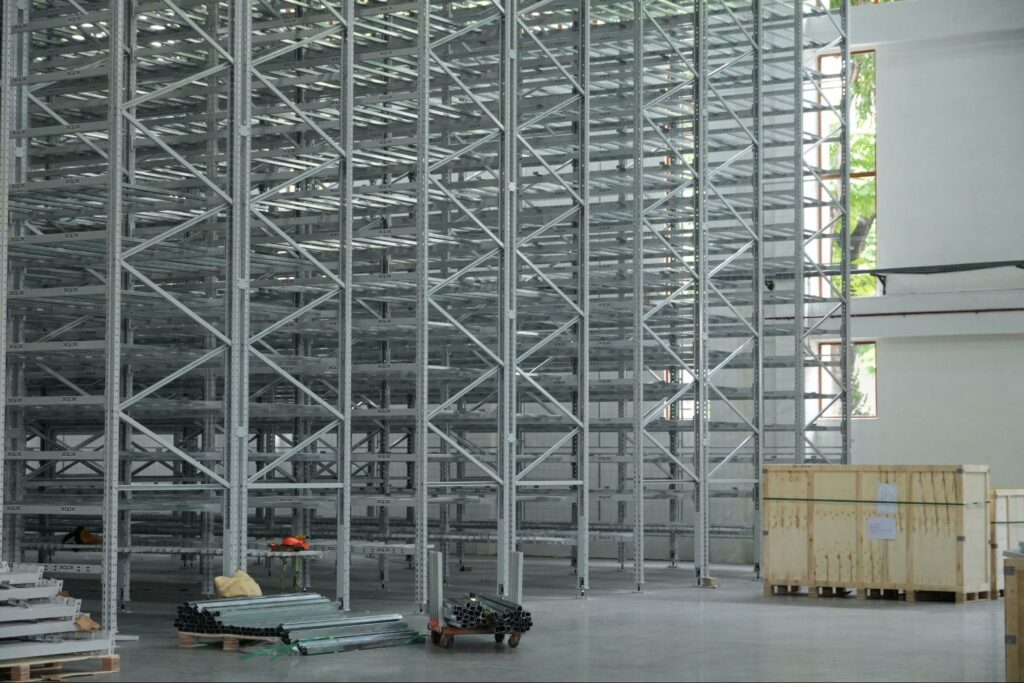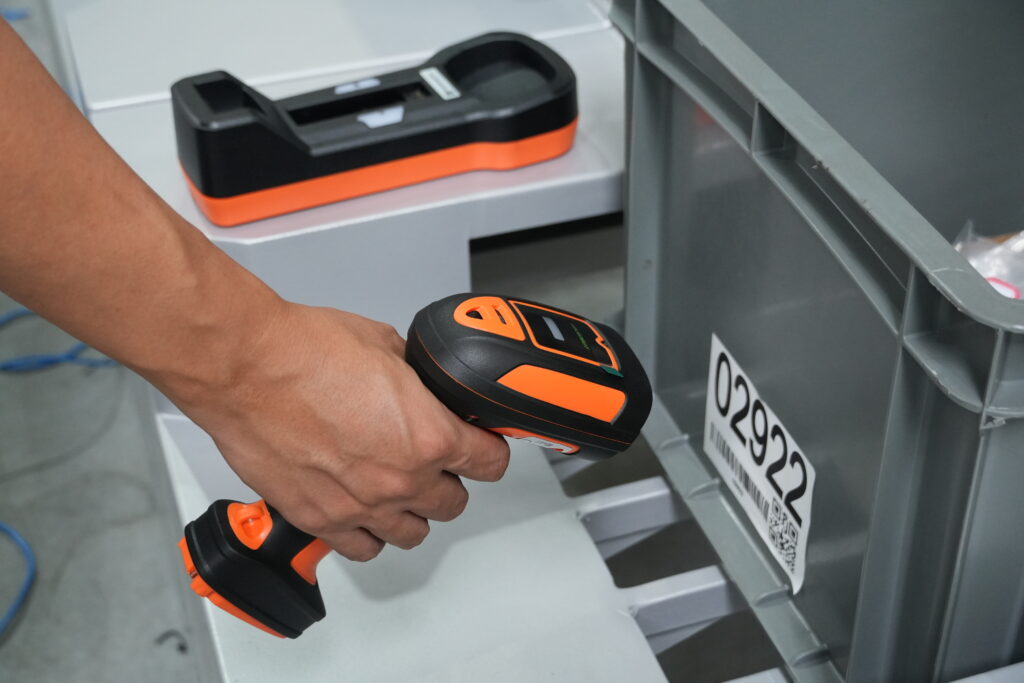Warehouse automation is rapidly transforming how businesses across all sectors operate, offering innovative solutions to enhance efficiency, productivity, and accuracy in warehouse operations. As the demand for faster and more reliable fulfilment grows and labour shortages continue to challenge businesses, advanced automation technologies are becoming increasingly crucial.
This guide will explore the top 10 warehouse automation trends for 2025, providing examples of the latest advancements, an explanation of the benefits of warehouse automation, and their potential to revolutionise your warehousing.
The Latest Automation Trends in Warehouse Management to Watch For
Here are the key warehouse automation trends shaping the future of warehousing:
1. Warehouse Management Systems (WMS)
Warehouse automation technology often begins with robust software solutions. A Warehouse Management System (WMS) is a software application designed to control and optimise warehouse operations.
Essentially, it acts as the central brain of your warehouse, orchestrating and streamlining various processes. Implementing a WMS can lead to lower labour costs by optimising workforce allocation, improved inventory management through accurate tracking and forecasting, and better space utilisation within the warehouse.
Key functions of a WMS include:
- Tracking inventory levels in real-time.
- Providing accurate data on stock location and movement.
- Directing picking and packing activities to optimise routes and minimise errors.
- Coordinating automated warehouse equipment such as conveyors and sorting systems.
2. Collaborative Robots (Cobots)
Cobots are designed to work alongside human workers, enhancing their capabilities and improving efficiency. Unlike traditional industrial robots that operate in isolation, cobots are designed for automation and safe and efficient human-robot collaboration.
These robots can assist with various tasks in a warehouse to reduce physical strain on workers, such as:
- Picking
- Packing
- Palletising

3. Automated Guided Vehicles (AGVs) & Autonomous Mobile Robots (AMRs)
Automated Guided Vehicles (AGVs) and Autonomous Mobile Robots (AMRs) are prime examples of automation technologies that are transforming the way goods are moved within a warehouse.
AGVs are self-guided vehicles that follow pre-defined paths, typically using magnetic strips or wires for navigation. AMRs, on the other hand, are more advanced robots that can navigate dynamically using sensors and artificial intelligence. They can be used to automate tasks such as:
- Transporting goods between different areas within the warehouse.
- Picking orders using robotic arms or other attachments to select items from shelves and convey them to packing stations.
- Performing inventory checks and updating stock levels in real-time using scanners or RFID readers.
- Sorting items based on various criteria (size, destination, etc.) and palletising them for shipping.
Both AGVs and AMRs play a crucial role in the automation of warehousing operations, reducing the need for manual transportation and freeing up workers for more complex tasks. These technologies also ensure fewer errors, better scalability, and improved workplace safety.

4. Automated Storage and Retrieval Systems (AS/RS)
Automated Storage and Retrieval Systems (AS/RS) are another key example of warehouse automation that is designed to automate the storage and retrieval of cargo within a warehouse. These systems utilise various configurations, including cranes, shuttles, Vertical Lift Modules (VLMs), and carousels, to optimise storage space and streamline material handling.
AS/RS offer numerous benefits, including lower labour costs, improved picking accuracy, and maximised space utilisation. By automating the movement of goods within the warehouse, AS/RS can significantly improve efficiency and reduce the risk of errors.
5. Wearables
Wearables, such as smart glasses, gloves, and bracelets, are becoming increasingly common in warehouses as part of the broader trend of warehouse automation technology. Wearables contribute to automation in warehousing operations by reducing distractions, improving efficiency, and lowering costs.
These devices can provide operators with real-time information and guidance, helping them perform the following tasks more efficiently and accurately:
- Picking and packing orders
- Inventory management
- Navigation and route optimisation
6. Pallet Shuttle Systems
Pallet shuttle systems are high-density storage solutions that use electric shuttles to automate the storage and retrieval of pallets within storage channels. These systems offer efficient storage, high productivity, enhanced safety, cost savings, and versatility, making them a valuable warehouse automation solution.
7. Predictive Maintenance
Predictive maintenance utilises sensors and data analysis to monitor equipment and detect potential defects before they lead to failure. This proactive form of automation helps prevent costly downtime, enhance workplace safety, and extend the lifespan of equipment.
This technology can be integrated with the other examples mentioned in this list, such as a Warehouse Management System (WMS), to provide a comprehensive overview of a warehouse’s equipment health and maintenance needs.
8. Fleet Management Systems
Fleet management systems are used to monitor and manage vehicles within a warehouse, such as forklifts and pallet jacks. These systems help:
- Track activity
- Protect equipment
- Optimise workflows
- Manage maintenance schedules
By improving the efficiency and utilisation of warehouse vehicles, fleet management systems contribute to overall warehouse automation solutions. They can help improve safety by monitoring driver behaviour and providing alerts for potential hazards.

9. Pick-to-Light and Put-to-Light Systems
Pick-to-light and put-to-light systems are other examples of warehouse automation that can significantly improve order fulfilment efficiency. These systems use light devices, such as LEDs or light bars mounted on shelves or racks, to guide workers in picking and placing items, respectively. These systems enhance picking accuracy, increase productivity, and reduce training costs, making them valuable tools in warehouse automation solutions. By providing visual cues to guide workers, these systems also minimise errors and improve efficiency.
10. Automated Sortation Systems
Automated sortation systems eliminate the manual labour involved in identifying and diverting materials on conveyor systems. These systems use various technologies, such as barcode scanners and sensors, to sort items efficiently and accurately. By automating the sorting process, warehouses can reduce manual handling, improve accuracy, and speed up order fulfilment.
Halcon Primo Logistics: Your Partner in Warehouse Automation
As you explore the various types of warehouse automation and seek to implement the latest trends in warehouse management, Halcon Primo Logistics can be your trusted partner for all types of warehousing solutions.
With our expertise in providing comprehensive supply chain solutions and warehouse automation solutions in our bonded warehouse, we are well-equipped to help you with your warehousing needs & operations. Our comprehensive services, including project logistics, will also streamline your processes and enhance your efficiency.
Contact Halcon Primo Logistics today to learn how we can transform your warehousing with automation and help you achieve your business goals.

